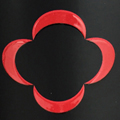Taylor Fladgate
by
Terry Sullivan
 Summary: Dating back to 1692, Taylor Fladgate is one of the oldest founding port houses in Portugal. It is also the closest port lodge to the Yeatman Hotel, via the side entrance. A self-guided tour, including a space to take a selfie is available for visitors.
Summary: Dating back to 1692, Taylor Fladgate is one of the oldest founding port houses in Portugal. It is also the closest port lodge to the Yeatman Hotel, via the side entrance. A self-guided tour, including a space to take a selfie is available for visitors.
While in Porto, we stayed at the Yeatman Hotel. From the patio outside our room, we were able to see the Taylor Fladgate sign. Discovering a door just a few feet from our room, we were able to exit the hotel and walk down a few flights of stairs. Exiting through a gate, just across the narrow, cobblestone street is Taylor Fladgate. It is one of the founding port houses in the country. The facility in Porto houses the visitor’s center, the barrel room and a wine tasting building. Grapes are grown on quintas in the Douro. Wine is made at winemaking properties in the Douro and brought to Porto to age. It has been this way for over three centuries.
The Audio Guided Tour
Visitors are given a device that resembles a phone that has a pre-recorded audio tour. The tour is offered in nine languages with plans to add additional languages. Wine enthusiasts can listen to as much or little as they wish as they pass through the displays and cellars. The displays also have text that explains what is seen.
 We learned that Taylor Fladgate has three quintas in the Douro where their grapes are grown. These include Quinta de Vargellas, Quinta de Terra Feita and Quinta do Junco. While visiting a winery in the Douro during March, I was able to capture a photo of the Quinta de Terra Feita vineyards in the distance. Sustainable, agricultural practices are used in the 500 hectares (1,236 acres) of vineyards that provide 30% of the grapes needed by Taylor Fladgate. The remaining 70% of the grapes are sourced from growers that have been supplying Taylor’s for generations. In the visitors’ center, wine enthusiasts can observe photographs of the vineyards through the year.
We learned that Taylor Fladgate has three quintas in the Douro where their grapes are grown. These include Quinta de Vargellas, Quinta de Terra Feita and Quinta do Junco. While visiting a winery in the Douro during March, I was able to capture a photo of the Quinta de Terra Feita vineyards in the distance. Sustainable, agricultural practices are used in the 500 hectares (1,236 acres) of vineyards that provide 30% of the grapes needed by Taylor Fladgate. The remaining 70% of the grapes are sourced from growers that have been supplying Taylor’s for generations. In the visitors’ center, wine enthusiasts can observe photographs of the vineyards through the year.
 From the first room where you learn about climatic effects of the Atlantic and weather in Porto and the Douro Valley, your tour takes you into an aging area where wood, cigar-shaped barrels and large wood vats age the ports. One area was set up for those who like to take selfies. From this room a ramp leads to another area where there are photos and displays of the terraced vineyards in the Douro.
From the first room where you learn about climatic effects of the Atlantic and weather in Porto and the Douro Valley, your tour takes you into an aging area where wood, cigar-shaped barrels and large wood vats age the ports. One area was set up for those who like to take selfies. From this room a ramp leads to another area where there are photos and displays of the terraced vineyards in the Douro.
Photos and drawings explain how port wine is made. Of interest were the lagars, large open granite vats, where photos and drawings showed people, arm-in-arm, crushing the grapes (the corte). Another photo shows people in the vat for the second phase of treading the liberdade where individuals work separately mixing the skins with the juice. Although some port producers still use people to tread the grapes in lagars, other producers use mechanical plungers to do this chore. Fermentation lasts for three days, then is stopped by adding grape spirits to the racked wine. The grapes spirit is 77% alcohol and raises the alcohol level of the wine high enough to kill the yeast leaving the remaining sugar levels unfermented.
Another room on the tour housed artifacts from the past. Barrels, wood tanks and coopers’ tools were some of the highlights. A description of how barrels were made helps tourists envision the barrel making process. Visitors can learn about many other artifacts.
 Four Families over 300 Years
Four Families over 300 Years
Along the tour, we learned about the four main families associated with Taylor Fladgate: Bearsley, Taylor, Fladgate and Yeatman. These families have owned or managed the company since its founding in 1692. Job Bearsley was a London wine merchant who established the company. His family led the company into the 19th century. Joseph Taylor was made a partner and then owned the company in 1826. Joseph Taylor died in 1837, and the company was left in the hands of John Fladgate and Morgan Yeatman. The descendants of Morgan Yeatman led the company from the twentieth century to the present.
In the wine shop we saw a portrait of Baron Fladgate. Under the image a plaque states,
Barão Fladgate
1809 - 1876
Partner
Taylor Fladgate & Yeatman
Port Tasting
 Our tasting was conducted by Ana Margarida Morgado, Public Relations for the Fladgate Partnership. We asked Ana about the symbol on the Taylor Fladgate logo that looks like a number 4 over two capital X’s. We learned that this was the logo used by founder Job Bearsley.
Our tasting was conducted by Ana Margarida Morgado, Public Relations for the Fladgate Partnership. We asked Ana about the symbol on the Taylor Fladgate logo that looks like a number 4 over two capital X’s. We learned that this was the logo used by founder Job Bearsley.
Our first port was the Chip Dry White Port. Taylor Fladgate first introduced this product in 1934. It ferments longer than three days before grape spirits are introduced to arrest the fermentation. The port is made from white grape varieties. It had a gold color and was 20% alcohol with 32 g/L of residual sugar. This was quite dry since many of the ports we have tasted had 85 to 120 g/L of sugar. The aroma of the Chip Dry was floral. In the mouth the feel was extremely smooth. Daisies, citrus and white peach were noticed for the taste. The finish was long and there was a continuous floral aftertaste. There was no alcohol burn on this chilled port. The port makes a good aperitif. It also makes a great refreshing cocktail with one part port to two parts chilled tonic water, a sprig of mint and lemon rind.
 We next tasted a late bottled vintage port. Taylor Fladgate pioneered this style of port creating the first LBV over four decades ago. The 2013 LBV had a very dark ruby to black color with 20% alcohol and 85 g/L of residual sugar. The aroma offered dried black fruits while the taste was smooth with black cherries, black plums and baking spices. It had a fruity finish with a long aftertaste in which the fruit yielded to baking spices. There was no alcohol burn on the wine.
We next tasted a late bottled vintage port. Taylor Fladgate pioneered this style of port creating the first LBV over four decades ago. The 2013 LBV had a very dark ruby to black color with 20% alcohol and 85 g/L of residual sugar. The aroma offered dried black fruits while the taste was smooth with black cherries, black plums and baking spices. It had a fruity finish with a long aftertaste in which the fruit yielded to baking spices. There was no alcohol burn on the wine.
The Ten Year Old Tawny Port was a red color with brown hue. The wine was 20% alcohol with a residual sugar of 85 g/L. Nuts, dried fruits and spice were picked up on the aroma. The taste was silky offering dried cherries, almonds and baking spices. Serve slightly chilled after a meal or with almonds and walnuts.
The 2015 Quinta De Vargellas Vintage Port was a dark ruby color with a black hue. The 20% alcohol port had a very fruity aroma. The taste was velvety with cherries, black plums, honeysuckle and baking spices. There was a long fruit forward finish.
In addition to the audio tour and tasting, visitors can also enjoy lunch or dinner at the Barão Fladgate Restaurant. Plan to spend a few hours at Taylor Fladgate Port Lodge in Porto, Portugal.
Taylor's Port Visitor’s Center
Rua do Choupelo, nº 250
4400-088 Vila Nova de Gaia, Portugal
Article written March 2018.
Please support the following.
 |
||||
|
Portugal |
Spain and Portugal |
SmoothRed London, England, United Kingdom |

